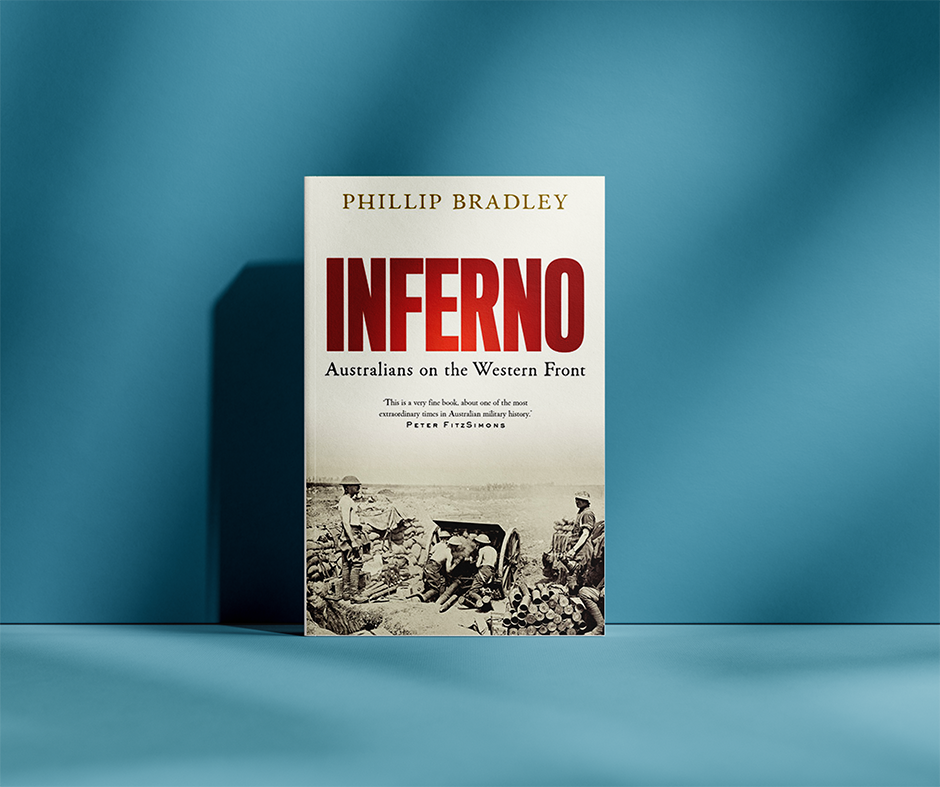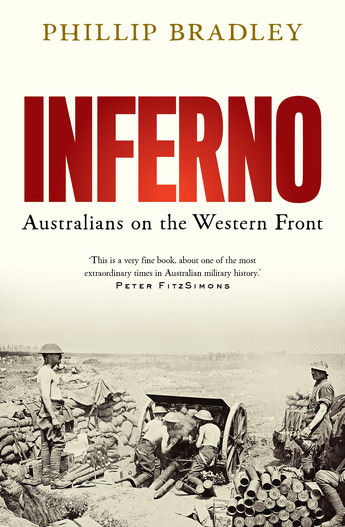Inferno by Phillip Bradley Extract
- Allen & Unwin

- Nov 2
- 3 min read
Read an extract from Inferno by Phillip Bradley.

In early April the 2nd Division took over a sector of the front line near Armentières from the British. During the night of 10 April, the 18th Battalion moved into the muddy, rat-infested trenches. ‘Crucified in trenches,’ Major George Murphy wrote after the heavy German shellfire that greeted his battalion. Joe Maxwell was in the midst of it. ‘We are lost in a chaos of flying mud, flying bags, flying duckboards and barbed wire that twists in the air like mad serpents,’ Maxwell wrote. ‘My hand touches some- thing warm and clammy that is not mud,’ he added. ‘A lighted match reveals the blood-soaked, mangled corpse.’ The constant German shelling ‘makes your head ache with concussion’, Andrew Mitchison wrote. ‘One could hardly see through the smoke.’ Some men suffered from shell shock; the artillery fire drove them mad. On 5 May the Germans ‘opened fire on our salient with all their guns’, wrote Alfred Binskin. The experience ‘was something awful, killing and wounding 150 of the 20th Battalion’, Binskin noted, describing the losses in his own battalion. ‘Men blown to pieces; trenches blown down. German machine guns firing on us all the rest of the night,’ he continued. ‘It was like hell let loose,’ Norm Craven wrote.
On 18 April Lieutenant John Raws, who was with the 22nd Battalion, wrote that he ‘had a good deal to learn’. He saw the need to master how to move about his own trenches by day and night and also to know exactly where the enemy trenches were. And then there was No Man’s Land, a stretch of some 250 metres that was only patrolled by night, preferably once the moon had set. On his second night in the line Raws went out with an experienced non-commissioned officer (NCO) to examine the barbed-wire defences. Their movement was slow, with half the time spent crawling over the muddy ground, and pausing whenever enemy flares went up, every 30 seconds or so. Raws noted that when a flare went up you would ‘let your limbs just sink under you and drop flat’ or else ‘just stand absolutely still’. You would also arrange to allay enemy suspicions by having your own flares go up at certain times while your men opened fire but deliberately aimed high. As Don Lechte put it, ‘more star shells or flares went up in one night than we had seen on Gallipoli in four months’. The 23rd Battalion went to the line at Bois Grenier. ‘The trenches here are not really trenches,’ Harold Hill wrote. ‘Only a foot deep with six feet high walls.’ The men would ‘dig a trench about a foot deep then make a fence’. Earth would be then banked against them ‘to a thickness of about five feet’.
On 9 May the 24th Battalion had its first man killed at the front when a scout was shot. ‘The bullet going clean through the steel helmet, through his head, and out through the helmet again,’ Percy Smythe related. The following night Smythe went out on a wiring party. It was a moonlit night and ‘the German machine guns began spitting’. The men had to lie flat, ‘like so many logs in the grass . . . while the guns swept up and down our lines’. When the moon set, the work resumed. On the third such night, with a cold rain falling, the men worked rather than lie in the wet grass waiting for the all clear. ‘A fellow might as well be shot as die of pneumonia,’ Smythe realised.
Extracted from Inferno by Phillip Bradley available 4 November in all good bookstores.

Inferno
by Phillip Bradley
The epic story of the Australians on history's greatest battlefront, 1916–1918.








Comments